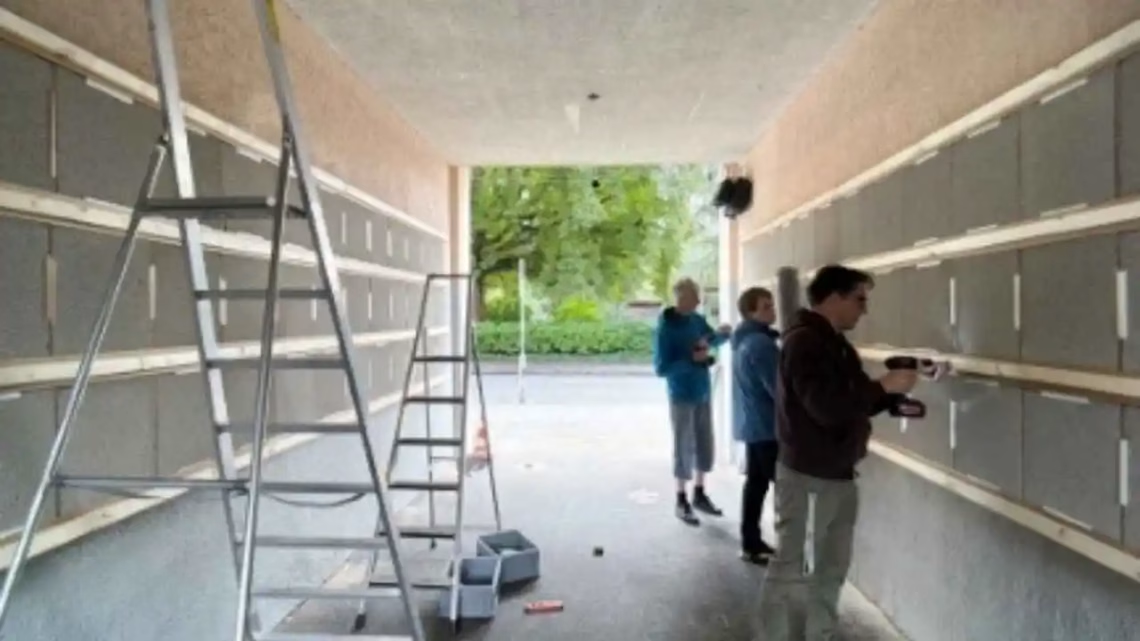Innovative Ultra-Thin Acoustic Panels Reduce Urban Noise Pollution
Swiss researchers at EMPA have pioneered a revolutionary 2.1-inch noise absorber using multi-layered mineral foam (gypsum/cement) with graded porosity. This acoustic metamaterial achieves comparable noise reduction to bulkier conventional materials through engineered soundwave dissipation pathways. Urban testing in Zurich demonstrated 4-decibel noise attenuation – a perceptible reduction in traffic noise irritation. The innovation addresses critical urban density challenges, offering architects and residents unprecedented space-efficient noise mitigation solutions without sacrificing structural integrity or environmental safety.
Urban Noise Mitigation Implications
- Space-Optimized Installation: Retrofit existing urban structures with minimal footprint using panels 60% thinner than rock wool alternatives
- Frequency-Specific Customization: Utilize EMPA’s numerical modeling to target dominant noise frequencies in your environment (road traffic range: 500-2000Hz)
- Multi-Environment Application: Deploy weather-resistant variants outdoors or indoor-safe versions in schools/offices meeting EN 13501-1 fire standards
- Monitor Commercialization: Track production scaling through De Cavis partnership for Q3 2026 anticipated market availability
Acoustic Engineering Innovation
The absorber’s performance stems from graded porosity design – successive layers with pore sizes from 0.1mm to 2mm create labyrinthine soundwave paths extending transmission distance 3.2x versus flat surfaces. This forced impedance mismatch converts acoustic energy into heat through viscous–thermal dissipation mechanisms. Field tests achieved NRC 0.85 ratings (Noise Reduction Coefficient) in the critical 800-1600Hz urban noise spectrum.
Built Environment Implications
Technical References
- EMPA Acoustics Lab Research Portal – Original research papers on graded porosity materials
- De Cavis Industrial Partner – Commercialization roadmap for architectural applications
- WHO Noise Pollution Guidelines – Health rationale for urban noise reduction technologies
Urban Acoustics FAQs
- How does 4dB reduction impact perceived loudness? A 3dB reduction halves acoustic energy; 4dB yields noticeable irritation reduction per ISO/TS 15666 assessment scales.
- Can panels address low-frequency traffic rumble? Current iteration optimized for mid-frequencies; EMPA developing hybrid systems for
- Maintenance requirements for outdoor installation? Cement-based variants require bi-annual cleaning; gypsum composites need protective coatings in freeze-thaw climates.
- Cost comparison to conventional barriers? Prototype costs 22% premium over fiberglass, projected to reach price parity at industrial production scales.
Acoustics Technology Keywords
- Space-efficient noise reduction solutions for urban housing
- Thin-profile architectural acoustic panels
- Graded porosity sound absorption technology
- Urban traffic noise mitigation systems
- Retrofit acoustic treatments for existing buildings
- EMPA mineral foam sound absorber applications
- High-performance thin sound barriers
ORIGINAL SOURCE:
Source link






Acoustical Engineering Perspective
“EMPA’s breakthrough represents a paradigm shift in architectural acoustics,” notes Dr. Helena Voss, Fellow of the Institute of Noise Control Engineering. “By achieving STC 45 ratings (Sound Transmission Class) in sub-3-inch assemblies, they’ve overcome the mass law limitations that have constrained urban noise control for decades. This enables truly effective noise mitigation in space-constrained historic districts where traditional solutions were physically impossible.”